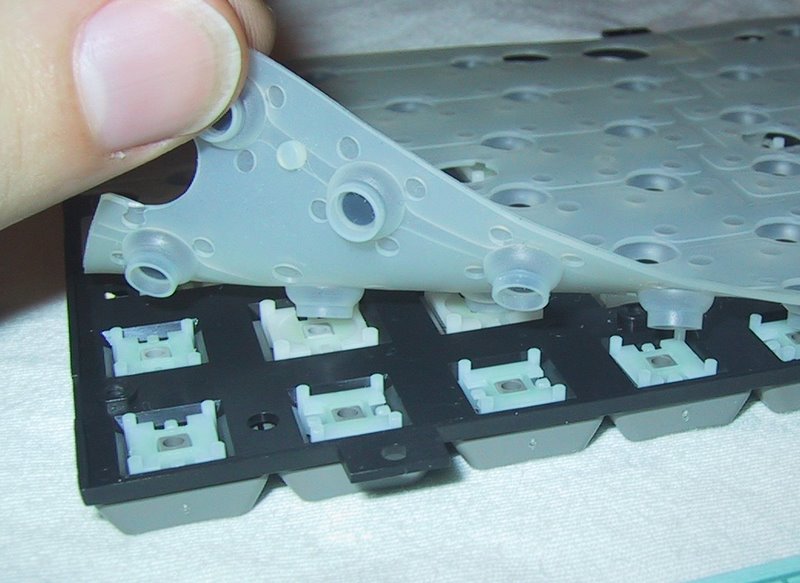Exploring the Benefits of Membrane Switches for Modern Electronic Devices
The expedition of membrane switches in modern electronic tools supplies an interesting perspective on their myriad advantages, especially in regards to layout flexibility, sturdiness, and cost-effectiveness. These user interfaces not only hold up against severe ecological conditions but likewise provide a high level of modification, which is increasingly essential in today's open market. As industries proceed to advance, the duty of membrane layer switches in enhancing customer experience and operational effectiveness warrants closer exam. Recognizing exactly how these parts can form the future of digital applications might expose understandings that could affect design and manufacturing methods considerably.
Benefits of Membrane Switches
Membrane layer switches are increasingly preferred in contemporary electronics due to their many advantages. One of the primary benefits is their small layout, which enables space-efficient combination into different devices. This slim profile not just preserves area however likewise adds to the total visual appeal of electronic products.
An additional benefit is their durability. Membrane switches are commonly immune to dampness, dust, and impurities, making them ideal for usage in settings where direct exposure to extreme problems is a concern. This resistance extends the life expectancy of the switches, decreasing the need for regular substitutes and upkeep.
In addition, membrane layer changes deal exceptional responsive responses, enhancing customer experience. The responsive reaction is frequently developed to offer a gratifying sensation upon activation, which can improve customer complete satisfaction and effectiveness.
Furthermore, the manufacturing process of membrane switches is cost-effective, permitting reduced manufacturing expenses compared to standard mechanical buttons. This price makes them ideal for a wide variety of applications, from consumer electronics to industrial equipment.
Layout Adaptability and Modification
The style adaptability and customization options offered by membrane changes better boost their charm in modern electronic devices. These buttons can be tailored to fulfill specific aesthetic and useful requirements, enabling manufacturers to produce tools that straighten closely with brand identity and individual preferences. With numerous choices in terms of shades, shapes, and dimensions, membrane layer switches can seamlessly incorporate into diverse item styles, whether for customer electronic devices, industrial applications, or clinical tools.
Furthermore, the capability to include graphics and symbols directly onto the button surface improves functionality while decreasing the demand for additional labeling. This assimilation not only streamlines manufacturing processes yet also contributes to a sleeker total look. The style can be further customized through functions such as backlighting, responsive feedback, and multi-layer buildings, offering improved user communication.
Toughness and Ecological Resistance
Moreover, membrane switches can be crafted to be chemically resistant, making them appropriate for applications in commercial settings where direct exposure to solvents and cleaning agents prevails. The encapsulation of digital components within the membrane framework gives additional security against ecological stress and anxieties, ensuring dependable performance even in tough problems.
In enhancement to physical sturdiness, membrane changes exhibit outstanding resistance to UV light, stopping destruction and staining over time (membrane look what i found switch). This characteristic is specifically beneficial for exterior applications, where prolonged exposure to sunshine can endanger various other button types
Ultimately, the toughness and ecological resistance of membrane layer changes make them a suitable selection for a large range of contemporary digital tools, from medical tools to customer electronic devices, making certain consistent functionality and individual fulfillment throughout numerous applications.
Cost-Effectiveness in Production
Cost-effectiveness in production is a considerable advantage of membrane switches, making them a favored choice for suppliers in various sectors. The production process of membrane changes normally entails less materials contrasted to typical switches, which reduces basic material prices. This structured manufacturing procedure not only conserves money but also lessens waste, aligning with contemporary sustainability objectives.
In addition, membrane buttons can be generated using automated methods, allowing for high-volume outcome with reduced labor expenses. The integration of innovative printing innovations Full Report even more improves effectiveness, allowing producers to accomplish complex styles and performances without sustaining considerable added expenditures. This scalability guarantees that manufacturing can adjust to transforming market demands without jeopardizing top quality or increasing prices.

Additionally, the lightweight nature of membrane switches over adds to cost financial savings in delivery and handling, in addition to in the overall layout of digital gadgets. By removing large elements, makers can optimize the general item style, consequently enhancing market competition. In general, the cost-effectiveness of membrane layer changes not only advantages suppliers financially yet likewise assists in technology and quick item growth in the dynamic landscape of modern electronics.
Applications in Numerous Industries
Versatility attracts attention as a hallmark of membrane buttons, enabling them to find applications across a vast array of markets. In the medical care sector, these switches are important to clinical gadgets, offering easy to use user interfaces for tools like mixture pumps and diagnostic makers. Their resistance to moisture and simple cleansing make them optimal for settings needing rigid health requirements.
In the automotive industry, membrane switches contribute to the functionality of control panels and control board, supplying a smooth, contemporary look while ensuring sturdiness versus rough conditions. Their light-weight style additionally supports total automobile performance.

In addition, industrial equipment uses membrane layer switches for functional controls. Their robust nature and personalized attributes deal with the certain needs of diverse applications.
Conclusion
Finally, membrane layer changes deal substantial advantages for modern electronic devices, consisting of design versatility, resilience, and cost-effectiveness. membrane switch. Their customizable attributes and resistance to environmental variables make them appropriate for a wide variety of applications throughout various industries. As technical needs remain to develop, the flexibility and efficiency of membrane layer switches position them as an important element in improving individual experience and driving advancement within the affordable landscape of digital gadgets
Comments on “Understanding the Manufacturing Process of High-Quality Membrane Switches”